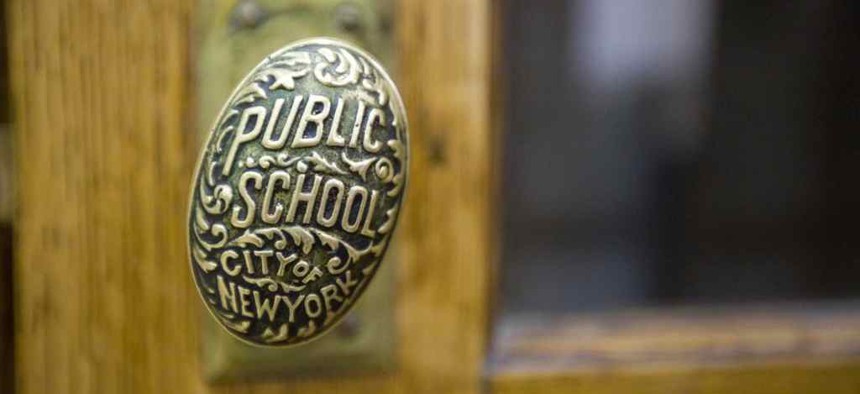Despite efforts from organizers and activists to get more students in cities across New York to skip state standardized math and English language arts tests this year, most urban districts are reporting the rates as flat or decreasing, according to an advocacy group and various news reports from across the state.
Buffalo Public Schools posted opt-out rates that fell from 9 percent to 7.7 percent in English language arts and from 15 percent to 8 percent on the math tests, preliminary numbers compiled by the opt-out advocacy group United to Counter the Core show.
While the United to Counter numbers were not comprehensive enough to show for certain whether numbers were going up or down, news reports showed that numbers remained essentially flat in Syracuse and New York City.
In Syracuse, unofficial results showed 6 percent of students opted out of the English exams, the same as the previous year, while 8 percent skipped the math tests, down slightly from 10 percent, according to the Syracuse Post-Standard. New York City opt-out rates are holding steady at about 2 percent, the Daily News reported.
In Yonkers, about 6 percent opted out of the English exams, down slightly from 7 percent, according to Gannett. No data is yet available for Rochester City School District.
Overall, statewide opt-out numbers remain high. In the suburbs, where opt-out rates are much higher, the number of students sitting out appears to have remained similar to last year, with statewide numbers essentially the same or possibly inching up from last year, when 1 in 5 students opted out.
Moreover, the number of students sitting out in some areas and districts remains high. In West Seneca, a Buffalo suburb, the rate has remained at about 71 percent for the last two years, one of the highest opt-out rates in the state. In districts throughout Long Island about 50 percent of students refused to take the tests this year.
But Steve Sigmund, the executive director of High Achievement New York, a coalition of business groups and educators pushing back against the opt-out movement, said urban parents have long recognized the value in standardized testing for marking student progress and identifying achievement gaps.
Sigmund, whose group has been campaigning against the opt-out movement since shortly after it gained steam in 2014, said opt-out activists wrongly assumed that urban parents were unaware of the issues around state testing when they chose to target those districts.
“They clearly do know about it and they reject it,” he said.
Chris Cerrone, a Western New York parent and co-founder of New York State Allies for Public Education, an opt-out activist group, offered a different take on why city districts numbers have remained low or, in the case of Buffalo Public Schools, experienced a significant decrease.
With many city district schools across the state under the threat of receivership, there is pressure to take the tests, with the threat of their schools coming under state control or being phased out causing many parents and students to comply in order to avoid those situations, he said.
“I think they get the worst of the testing because the schools are under so much pressure that the curriculums narrow to basically tested subjects in elementary school, so I think there is a lot of pressure,” Cerrone said. “There’s really been a large effort towards reaching out.”


